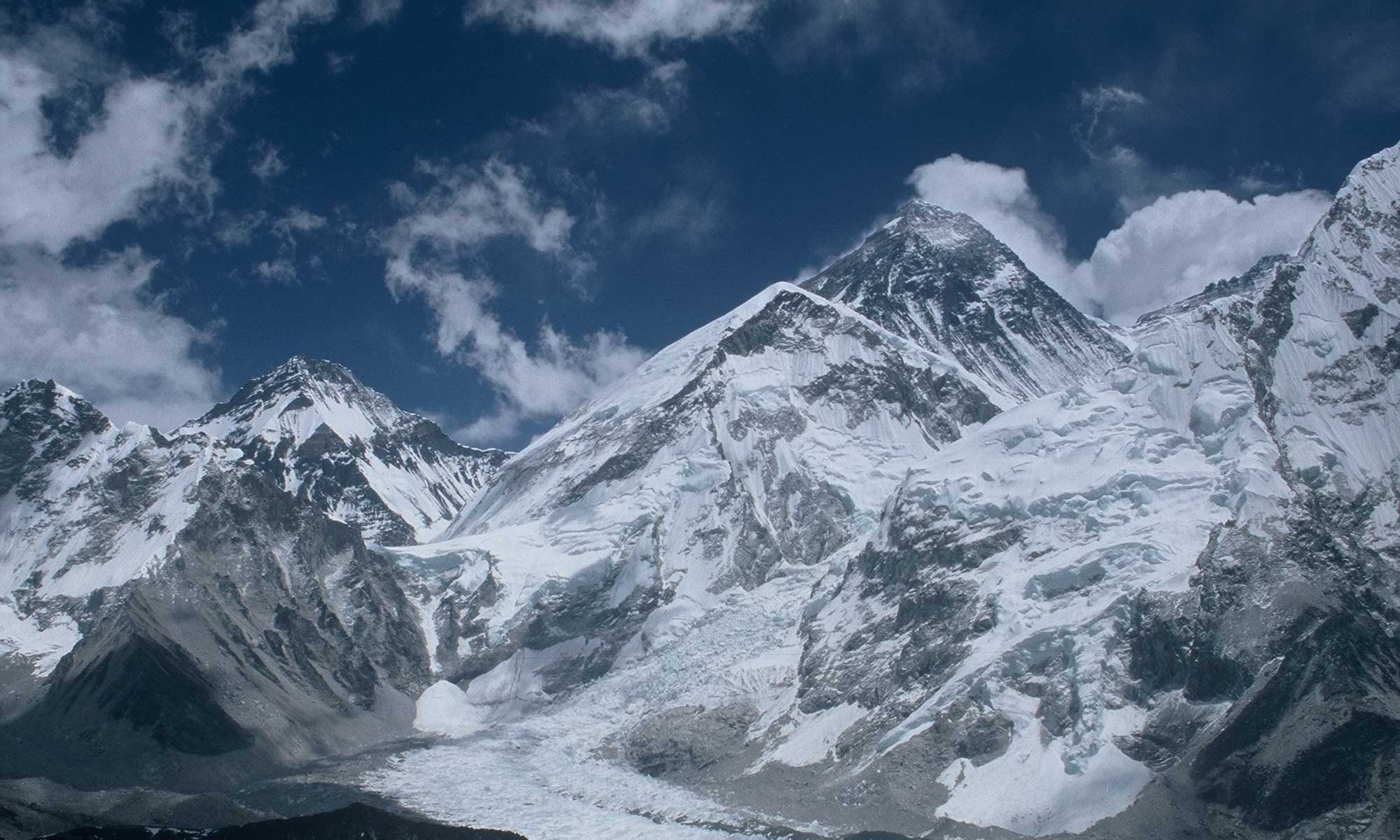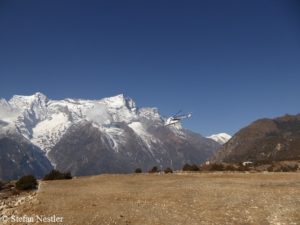In the ongoing discussion about the large-scale insurance fraud caused by faked helicopter rescue flights in Nepal, one aspect is missing out in my opinion: As reprehensible as the illegal activities of the trekking agencies, guides and hospitals involved in the scandal are and must therefore be punished, the attitude of many trekking tourists and mountaineers who let themselves be flown out by helicopter also plays a role. The question must be allowed: How willingly has one or the other alleged patient gone on board?
A matter of course
When in 2016, after 14 years of interruption, I was once again en route in the Khumbu, I was astonished by the aircraft noise in the formerly so quiet region around Mount Everest. When the weather was good, one helicopter after another flew through the valley. My impression: In the meantime helicopters have become a matter of course as a means of transport for people and material at the highest mountains of the world.
Before I hiked towards Everest Base Camp in 2002 – at times of the civil war between Nepalese government troops and Maoists –, I prepared myself for the trek with a targeted fitness training. I also learned about the risks of high altitude sickness in advance and developed an emergency strategy for myself: If I am affected, I’ll descend! A helicopter rescue was not an option for me, except in the greatest emergency. There were also a few rescue flights at that time, but you couldn’t rely on them. It was clear to me: Not my guide, not the owners of the lodges, nor the travel insurance are responsible for me, but myself.
Responsible? The others!
What about today? For many trekking tourists and mountaineers, the insurance mentality seems to have suppressed the awareness of being on the road on their own responsibility. Many think: “It will be all right. And if things do get critical, my expedition leader, mountain guide or Sherpa will take me to safety. And with the helicopter, I’ll quickly be back in civilization.”
No more discussions about style
When Reinhold Messner was flown from Makalu Base Camp to the base camp below the Khumbu Icefall in 1986 before climbing Lhotse, his last of the 14 eight-thousanders, there was still a lot of discussion as to whether this was good style; even when the South Korean Oh Eun-sun between 2008 and 2010 raised helicopter flights to the base camp as a tactic in order to scale as many peaks as possible as quickly as possible and grab the crown of the first woman on all 14 eight-thousanders. Today, however, hardly anyone says a word about it when professional climbers or clients of commercial expeditions are flown to the base camp by helicopter and leave it afterwards in the same way in order to be home as quickly as possible.
The shorter the better
Because adventures may not last too long these days. Operators are finding it increasingly difficult to find clients for eight-thousander expeditions that – as in the past – last six weeks or more. The shorter the trips, the more likely they are to be booked. It’s not for nothing that so-called “rapid” or “flash” expeditions (an eight-thousander within four weeks or less) are fully in vogue.
And what does all this have to do with the insurance fraud in Nepal? The market for helicopter flights in Nepal is booming because of demand. And this is also due to the changed attitude of visitors to the Himalayan state. So instead of just scolding the black sheep in Nepal’s trekking industry, there’s no harm in scrutinizing the behaviour of mountaineers and trekking tourists from all over the world.



